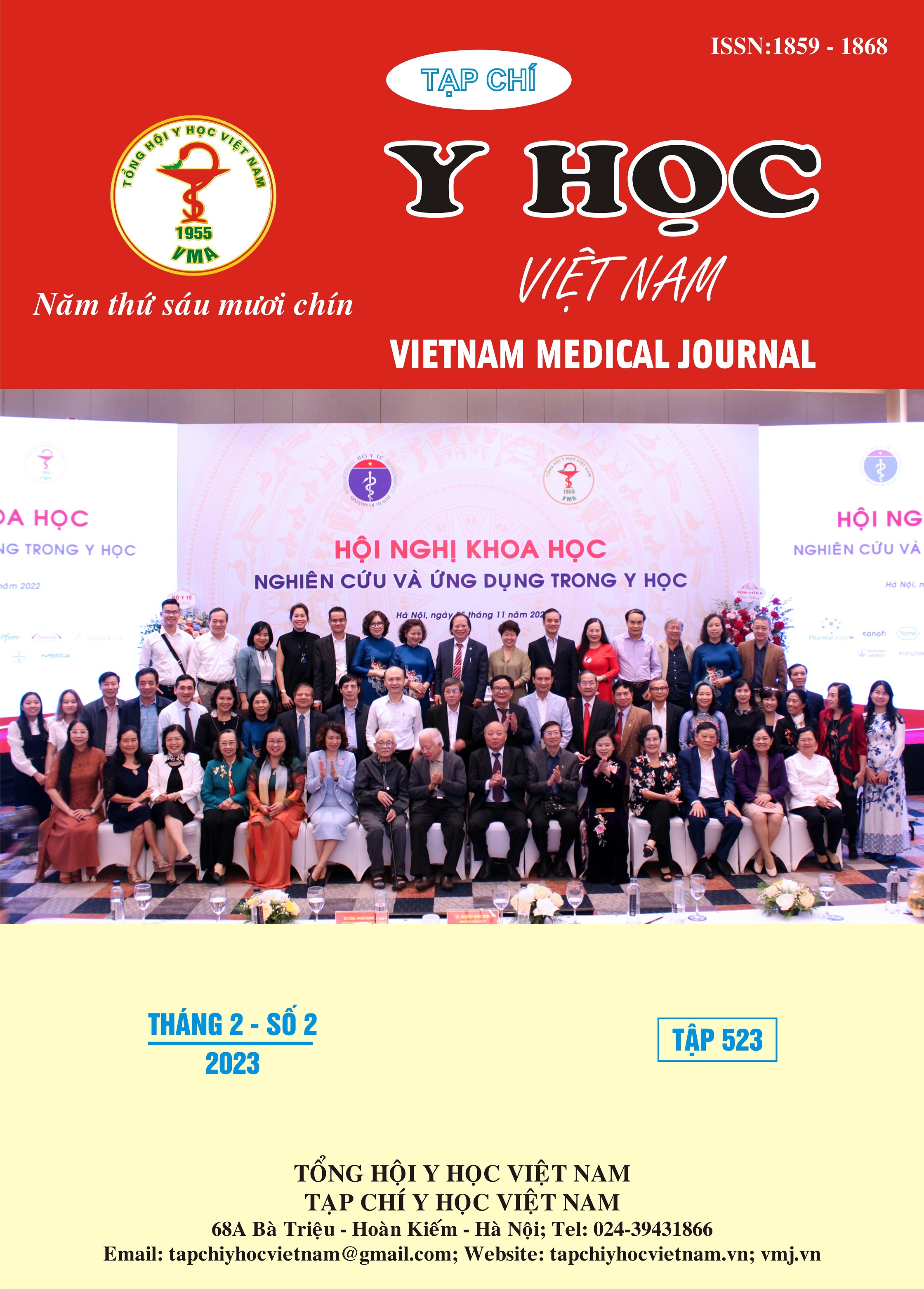BACTERIOLOGICAL STATUS OF NEW PATIENTS ENTERING THE INTENSIVE CARE UNIT, BẠCH MAI HOSPITAL 2021-2022
Main Article Content
Abstract
Objectives: Describe the etiological characteristics of bacteria and antibiotic susceptibility status in patients newly admitted to the intensive care unit. Subjects and methods: A cross-sectional descriptive study on 174 newly infected patients admitted to the Intensive Care Unit with positive culture results in the first 48 hours from August 2021 to July 2022. Results: In 174 infected patients admitted to the ICU with positive cultures, the most common bacteria were Gram-negative bacteria with the rate of K.pneumonia (34.5%), A.baumannii (29.9), P.aeruginosa (12.1%), E.coli (12.1%), S.aureus (10.9%). In which, antibiotic susceptibility of A.baumannii and K.pneumonia is tending to decrease, especially with Colistin with corresponding minimum inhibitory concentrations MIC50=0.19 µg/mL, MIC90=0.75 µg/mL and MIC50=0.38 µg/mL, MIC90=6 µg/mL. Gram-positive bacteria, mainly methicillin-resistant S.aureus (MRSA) are still sensitive to vancomycin (MIC50=1µg/mL, MIC90= 1 µg/mL). E. coli strains are still sensitive to carbapenem and amikacin. Conclusion: Patients who had an infection at the time of admission to the ICU had a severe condition. Most of the patients transferred from other places were infected with gram-negative bacteria. Antibiotic susceptibility is decreasing, especially A.baumanni and K.pneumonia.
Article Details
Keywords
Nosocomial infections, community infection, bacteria.
References
2. Bộ Y Tế. Tài liệu đào tạo Kiểm soát nhiễm khuẩn. Cục quản lý khám chữa bệnh. Accessed July 11, 2021. https://kcb.vn/vanban/tai-lieu-dao-tao-kiem-soat-nhiem-khuan
3. Hamouche E, Sarkis DK. [Evolution of susceptibility to antibiotics of Escherichia coli, Klebsiella pneumoniae, Pseudomonas aeruginosa and Acinetobacter baumanii, in a University Hospital Center of Beirut between 2005 and 2009]. Pathol Biol (Paris). 2012;60(3):e15-20.
4. Nguyễn Đức Quỳnh, Bùi Thị Hương Giang (2020). Đặc điểm tỉ lệ tử vong của các loại nhiễm khuẩn bệnh viện thường gặp và căn nguyên gây bệnh phân lập được tại khoa Hồi sức tích cực Bệnh viện Bạch Mai. Tạp chí y học Việt Nam, 2020:193-197.
5. Vũ Tuấn Dũng, Đặng Quốc Tuấn (2021). Tình hình nhiễm vi khuẩn gram âm ở bệnh nhân mới vào khoa hồi sức tích cực Bệnh viện Bạch Mai năm 2020 - 2021. Tạp chí y học Việt Nam. 2021; 507(2).
6. Vincent JL, Sakr Y, Singer M, et al. Prevalence and Outcomes of Infection Among Patients in Intensive Care Units in 2017. JAMA. 2020;323(15):1478-1487.
7. Lê Sơn Việt (2020). Đánh giá tình trạng nhiễm khuẩn bệnh viện tại khoa Hồi sức tích cực Bệnh viện Bạch Mai, Luận văn thạc sĩ, Trường đại học Y Hà Nội, Hà Nội.
8. Bùi Hồng Giang (2013). Nghiên cứu đặc điểm vi khuẩn và điều trị nhiễm khuẩn bệnh viện tại khoa Hồi sức tích cực Bệnh viện Bạch Mai năm 2012, Luận văn thạc sĩ, Trường đại học Y Hà Nội, Hà Nội
9. Trần Văn Ngọc (2016). Nồng độ ức chế tối thiểu (MIC90) của meropenem, imipenem và vancomycin trên vi khuẩn gây viêm phổi tại BV Chợ Rẫy. Hội Hô Hấp TP.HCM. http://www.hoihohaptphcm.org/index.php/chuyende/benh-phoi/300-nong-do-uc-che-toi-thieu-mic90-cua-meropenem-imipenem-vancomycin-tren-vi-khuan-gay-viem-phoi-tai-benh-vien-cho-ray
10. T.P.Lodise, J.Graves A. Evans, E.Graffunder, M Helmecke, B.M. Lomaestro, and K. Stellrecht. Relationship between Vancomycin MICandFailure among Patients withMethicillin-Resistant Staphylococcus aureus Bacteremia TreatedwithVancomycin.AntimicrobialAgentsAnd Chemotherapy,Sept.2008,p.3315–3320 Vol.52,No.9


